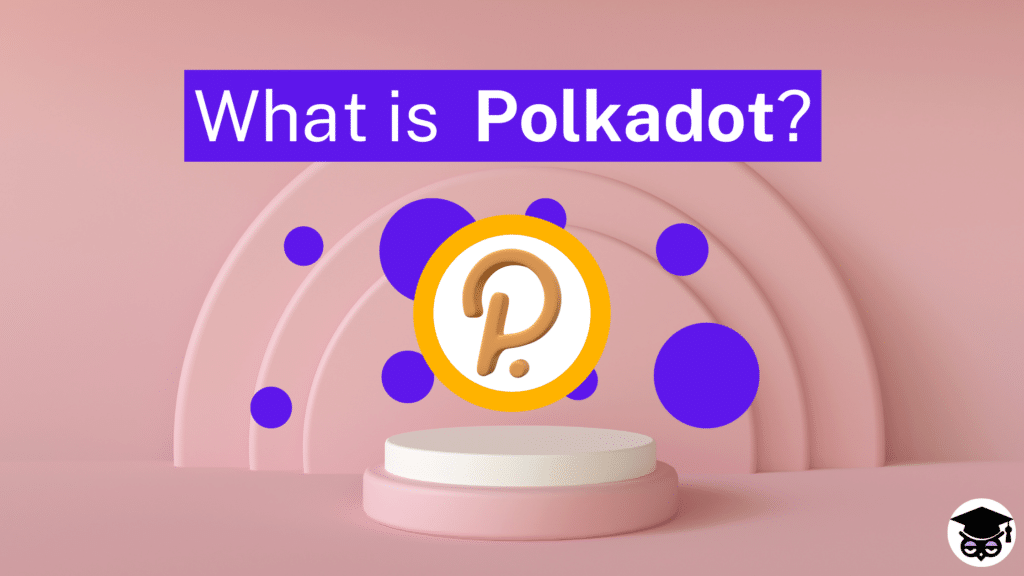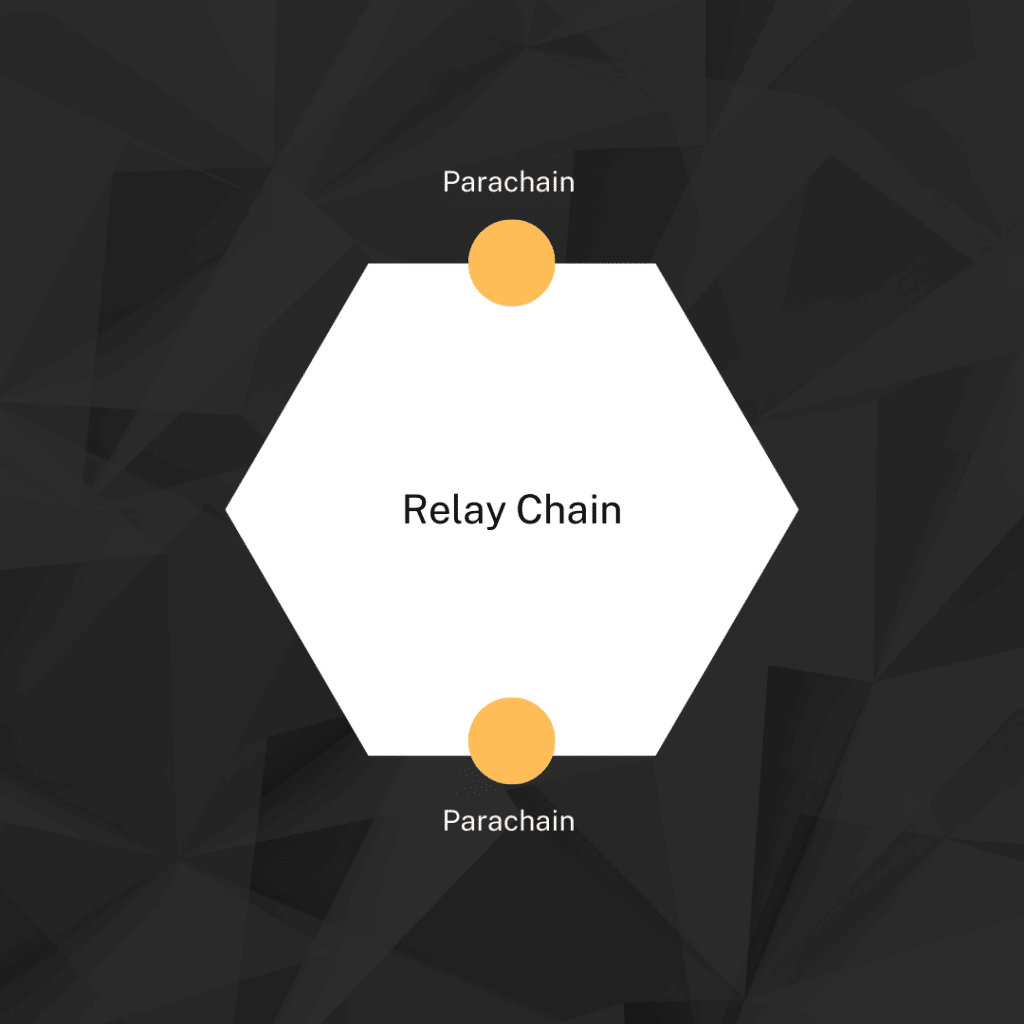What is Polkadot?
Polkadot is a decentralized protocol. It’s the native blockchain of the cryptocurrency with the same name, polkadot (DOT).
The Long Definition
Polkadot is a Proof of Stake (PoS) blockchain network. It was created to be one of the most scalable, decentralized, and secure blockchain. To do this, the protocol uses a unique multichain framework. This means unlike other blockchains, it consists of multiple chains that can communicate with one another.
The protocol’s native crypto asset is DOT.

History of Polkadot
The Polkadot project was started by Peter Czaban and Ethereum co-founder Gavin Wood. The latter published the protocol’s white paper in 2016. He is also credited for coining the term web3.
In 2017, Wood and Czaban launched The Web3 Foundation. Through it, they managed to raise over $144 million in an initial coin offering (ICO). This money was put towards the development of Polkadot.
The protocol was eventually launched on May 26, 2020. Its native token, DOT, was also released on the same day.
Understanding Polkadot
A blockchain is a distributed ledger of transactions. When you think of one, you typically imagine it as a single chain, like Bitcoin. Some protocols, like Ethereum, have multiple layers. Each layer has its own function within the broader infrastructure.
But Polkadot is unique in that it consists of multiple chains. You can think of it as an ecosystem (network) of smaller blockchains known as Parachains. These Parachains are created by users.
The Polkadot Structure
The Polkadot protocol can be divided into two sections– Parachains and the Relay Chain.

Parachains
Parachains are smaller blockchains that form part of the Polkadot network. They are application-focused, i.e., designed to run specific applications.
These networks are created by users for their applications. Developers who want to make decentralized applications (dApp) on Polkadot, can create mini-blockchains to run them. As a result, there are many such Parachains on the network.
These chains run independently from one another. However, they are interoperable– they can be configured to communicate with one another. Thus, users can perform cross-chain transfer of data and assets.
Note that developers don’t create their own chains from scratch. That would be a lot of work. Also, if each developer follows their own process, implementing cross-chain communication will be difficult.
The Web3 Foundation solves this project by providing a common framework. In software development, a framework is a platform that provides the foundation for creating applications. It comes with all the basic structures needed to create a certain type of software.
So, instead of starting from scratch, the developer is allowed to build their actual product. The Polkadot framework is known as Substrate.
The Relay Chain
The Relay Chain is the primary network of the Polkadot blockchain. While Parachains are created and maintained by users, the Relay Chain is the work of The Web3 Foundation.
The Relay Chain is the foundational chain of the Polkadot network. It essentially provides the underlying infrastructure for other networks to be built upon. This kind of protocol is known as a Layer 0 network.
In the Polkadot ecosystem, the Relay Chain is responsible for the security of the entire network. It is also where DOT transactions are executed, and consensus takes place through PoS. By doing this, it binds all the parachains in the network into one coherent ecosystem.

DOT
Polkadot (DOT) is the native coin on the network. It serves two principal functions: staking and governance.
Staking involves locking up DOT in a smart contract. It’s something validators must do to be allowed to take part in the network’s PoS consensus mechanism.
DOT also gives holders the right to participate in the governance of the protocol. They can make their opinions and desires known through voting.
Lastly, like any other cryptocurrency, you can trade DOT on exchanges.
Consensus Mechanism
Polkadot uses the PoS consensus mechanism. Normally, PoS blockchains rely on participants known as validators to verify data and transactions. But, given the unique structure of Polkadot, the protocol has two extra participants– nominators and collators.
- Validators: These participants run the nodes (computers) on the network. They need to stake a substantial amount of DOT to earn the rights to add new blocks of verified transactions to the relay chain. Validators do most of the work on Polkadot. They are rewarded with transaction fees and tips from other users.
- Nominators: These are responsible for nominating validators, hence the name. You nominate a validator by giving them some of your DOT to stake. In exchange, you will receive a portion of their rewards.
- Collators: Collators keep a record of valid transactions on the Parachains. They then submit these records to validators on the relay chain.
What Makes Polkadot Innovative?
A typical blockchain, like Ethereum, has a specific design for the entire network. Developers must have this design in mind when making decentralized applications (dApps). While it allows for homogeneity, it can be limiting.
This is because developers cannot optimize the protocol for the specific use cases they have in mind. Instead, they have to optimize their dApp for the blockchain. This means making certain compromises and tradeoffs in the application’s design and functionality.
With Polkadot, however, the developer can build a Parachain for their specific application. They can customize the mini-blockchain according to their development needs. So, in theory, they shouldn’t have to make compromises on their application. This allows for more optimized and featureful dApps.

Polkadot’s Scalability
Parallel also makes the Polkadot blockchain quite scalable. Scalability refers to the ability of a blockchain to process more transactions as demand arises. The more scalable a blockchain is, the more transactions per second (tps) it can handle.
This is a huge challenge for legacy blockchains like Bitcoin and Ethereum. Bitcoin can handle about 7 tps while Ethereum processes 15-30 tps. In times of peak demand, there is a lot of competition for which transactions should be processed first. This pushes the transaction cost upwards.
In Polkadot, however, the Parachains process transactions in parallel. This spreads the load, making the network much more scalable. It can handle a large load of transactions– well over 100,000 tps. So, even during peak demand, the transaction cost and time remain low.
Lastly, there is interoperability. The Polkadot project was built with interoperability in mind. This refers to the ability of blockchain networks to communicate with one another.
Most blockchains lack this ability. But in the Polkadot network, Parchains can seamlessly communicate with one another. There is also support for Bridges, which can be used to connect to external networks like Ethereum.
The Future of Polkadot
Polkadot is not a major protocol yet, at least not to the level of Ethereum, Bitcoin, and BSC. But it’s one of the most promising ones.
Its unique structure allows for a high degree of interoperability, scalability, and decentralization without compromising security. This has made it an attractive alternative for developers. Many teams have already built their own Parachains, and many more are expected in the future.
Want to join the Dypto journey? Follow our socials!